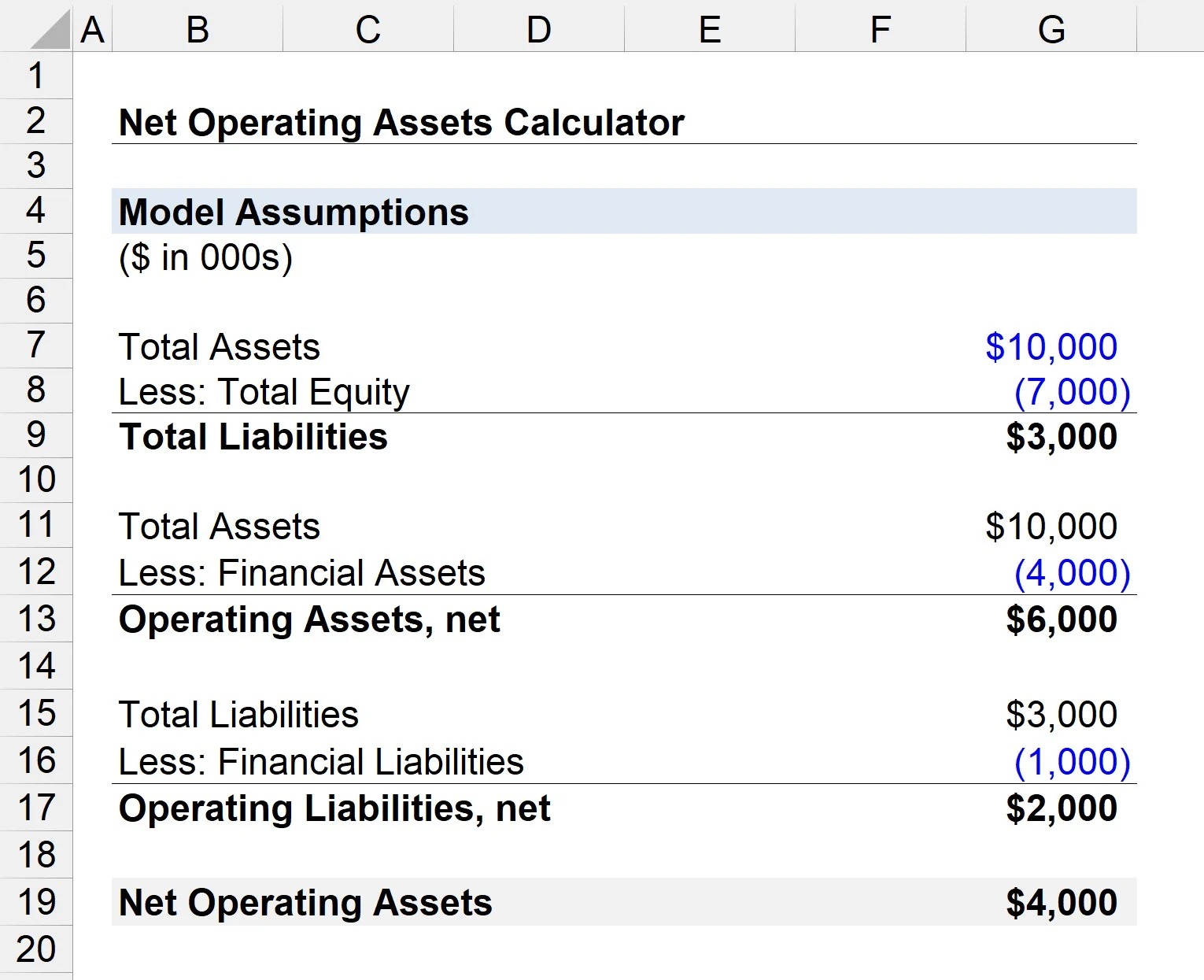

Finance
What Is A Net Investment?
Published: October 17, 2023
Discover what a net investment is in the world of finance and how it can impact your financial goals. Uncover the key principles behind net investments and explore their significance in wealth management.
(Many of the links in this article redirect to a specific reviewed product. Your purchase of these products through affiliate links helps to generate commission for LiveWell, at no extra cost. Learn more)
Table of Contents
Introduction
When it comes to personal finance and investment, it is important to understand various terms and concepts to make informed decisions. One such concept is net investment. Net investment is a key metric that helps individuals, businesses, and investors assess the profitability and growth potential of an investment.
Net investment refers to the amount of money that is invested after deducting any depreciation or capital consumption. It provides a clearer picture of the actual increase in the capital stock due to investment activities, as it takes into account the wear and tear or obsolescence of assets over time. By understanding net investment, individuals can estimate the real value of their investment and plan for future growth or adjust their financial strategies accordingly.
The calculation of net investment takes into account various factors including the initial investment, any additional capital injections, and the depreciation or reduction in value of assets. It is essential to accurately calculate net investment, as it provides insights into the actual increase in the value of an investment over a specific period of time.
Net investment is a significant metric in both personal and business finance. For individuals, it helps in assessing the growth potential of different investment options such as stocks, bonds, or real estate. It allows individuals to evaluate the returns they can expect from their investments and make better decisions regarding their financial goals.
In the business world, net investment is crucial for evaluating the performance and growth of a company. It enables businesses to determine the level of investment required for expansion, replacement of assets, or diversification. By understanding net investment, businesses can allocate resources strategically and optimize their financial resources for long-term success.
In the next sections, we will explore in detail the calculation of net investment, its importance, factors that affect it, and how it differs from gross investment. Understanding net investment will provide a solid foundation for making informed financial decisions and maximizing the value of your investments.
Definition of Net Investment
Net investment is a financial concept that represents the amount of investment made after accounting for the depreciation or decrease in value of assets over time. It refers to the increase in the net worth or capital stock resulting from investment activities. Net investment takes into consideration the wear and tear, obsolescence, or loss of value of assets and provides a more accurate assessment of the actual increase in investment capital.
To understand net investment, it is important to differentiate it from gross investment. Gross investment refers to the total amount of investment made without considering any depreciation or reduction in value. While gross investment provides an initial view of the total amount invested, net investment takes into account the impact of asset depreciation, providing a more realistic picture of the overall investment.
Net investment can be calculated by subtracting the depreciation or capital consumption allowance from the total investment made during a specified period. This calculation considers the decline in the value of existing assets and provides an estimate of the net increase in the investment capital.
Net investment plays a crucial role in evaluating the profitability and growth potential of an investment. It helps individuals, businesses, and investors in assessing the true value and returns generated by their investment activities.
For example, let’s say an individual purchases a rental property for $200,000. Over time, the property might experience wear and tear, reducing its value by $20,000 due to depreciation. The net investment in this scenario would be $180,000 ($200,000 – $20,000). This net investment value reflects the actual increase in the individual’s investment capital after accounting for the decrease in the property’s value.
Understanding the concept of net investment is essential for individuals and businesses alike. It allows for more accurate financial planning, evaluation of investment performance, and strategic decision-making. By considering net investment, investors can assess the true returns on their investments, make informed decisions, and optimize their financial strategies for long-term success.
Calculation of Net Investment
The calculation of net investment involves considering the initial investment made and adjusting it for any depreciation or reduction in value over time. By accounting for the decrease in asset value, net investment provides a more accurate representation of the actual increase in investment capital.
To calculate net investment, follow these steps:
- Determine the initial investment amount: This is the total amount of money initially invested in an asset or project.
- Identify the depreciation or capital consumption allowance: Depreciation refers to the decrease in value of an asset over time due to wear and tear, obsolescence, or other factors. This depreciation amount needs to be deducted to calculate net investment.
- Subtract the depreciation from the initial investment: Subtracting the depreciation amount from the initial investment gives the net investment value. This represents the actual increase in investment capital after considering the decrease in asset value.
For example, let’s say a company purchases new machinery for $50,000. The estimated depreciation for the machinery is $10,000 per year. After two years, the net investment can be calculated as follows:
- Initial investment: $50,000
- Depreciation after two years: $20,000 ($10,000 x 2)
- Net investment: $30,000 ($50,000 – $20,000)
In this example, the net investment after two years is $30,000, which reflects the actual increase in the company’s investment capital after considering the depreciation of the machinery.
The calculation of net investment is essential for accurately assessing the true value and growth of an investment. It enables individuals and businesses to make informed decisions based on the actual increase in investment capital and adjust their financial strategies accordingly.
It is important to note that net investment calculations can vary depending on the specific asset or project. Different methods and formulas can be used to account for depreciation based on different depreciation schedules or accounting standards. Consulting with a financial advisor or utilizing accounting software can help ensure accurate calculations.
Importance of Net Investment
Net investment plays a vital role in evaluating the profitability, growth potential, and financial health of an individual, business, or investment portfolio. Understanding the importance of net investment can help individuals make informed financial decisions and optimize their investment strategies for long-term success.
Here are some key reasons why net investment is important:
- Accurate assessment of investment growth: Net investment provides a more realistic assessment of the actual increase in investment capital by accounting for the depreciation or reduction in asset value. It helps individuals and businesses evaluate the true growth and returns generated by their investments.
- Strategic financial planning: By considering net investment, individuals and businesses can strategically plan their financial activities. They can analyze which investments are contributing significantly to their net investment and make adjustments accordingly to achieve their financial goals.
- Evaluation of investment performance: Net investment allows for a better evaluation of investment performance. By comparing the net investment values over different periods, individuals and businesses can assess how well their investments are performing and identify areas for improvement or adjustment.
- Optimization of financial resources: Net investment helps in optimizing financial resources by providing insights into the actual increase in investment capital. It enables individuals and businesses to allocate resources more effectively, ensuring that they are invested in opportunities that generate the highest net returns.
- Assessment of risk and return: Net investment allows for a more accurate assessment of the risk and return associated with an investment. By considering the depreciation or reduction in value, individuals and businesses can evaluate the potential risks and rewards of an investment and make informed decisions accordingly.
For example, let’s say an individual has two investment options: Option A with a gross investment return of 10% and Option B with a gross investment return of 8%. However, when considering the depreciation or reduction in value, Option A has a higher net investment return of 8% compared to Option B’s net investment return of 6%. In this case, net investment helps in making a more informed decision by considering the actual increase in investment capital.
By understanding the importance of net investment, individuals and businesses can make strategic financial decisions, assess investment performance accurately, and optimize their financial resources for long-term growth and success.
Factors Affecting Net Investment
Net investment is influenced by various factors that can impact the growth and value of an investment. Understanding these factors is crucial in evaluating the potential returns and risks associated with an investment. Here are some key factors that can affect net investment:
- Depreciation rate: The rate at which an asset depreciates over time is a significant factor affecting net investment. Assets with higher depreciation rates will result in a greater reduction in value and consequently a lower net investment.
- Inflation: Inflation can affect net investment by eroding the purchasing power of the initial investment. If the rate of inflation surpasses the return on investment, the net investment can decrease in real terms.
- Government regulations: Changes in government regulations, tax policies, or incentives can impact net investment. For example, tax credits or deductions can lower the effective cost of an investment, thereby increasing the net investment.
- Economic conditions: Economic factors such as interest rates, market trends, and business cycles can influence net investment. During periods of economic downturns or recession, net investment may decline due to reduced business activity and investment opportunities.
- Technological advancements: Technological advancements can affect net investment by rendering certain assets or industries obsolete. Investments in outdated technologies may experience higher rates of depreciation, resulting in lower net investment.
- Market competition: Market competition can impact net investment by affecting the profitability and growth potential of an investment. High levels of competition may lead to lower returns and reduced net investment in certain industries or markets.
- Risk factors: The level of risk associated with an investment can affect net investment. Higher-risk investments may provide higher returns but also increase the likelihood of significant depreciation, leading to a lower net investment.
- Management decisions: The decisions made by management regarding capital allocation, asset maintenance, and business strategies can influence net investment. Efficient and strategic management practices can maximize net investment, while poor decisions can result in lower returns.
It is important to consider these factors when evaluating the potential net investment of an asset or investment opportunity. Assessing the impact of these factors helps individuals and businesses make informed decisions regarding their investment strategies, risk tolerance, and long-term financial goals.
Furthermore, conducting thorough research, monitoring market conditions, staying updated on regulatory changes, and consulting with financial advisors can help individuals and businesses navigate the complexities of these factors and optimize their net investment.
Net Investment vs. Gross Investment
Net investment and gross investment are two closely related concepts in finance that provide different perspectives on the overall investment activity. Understanding the difference between net investment and gross investment is crucial for evaluating the true value and growth of an investment. Here are the key distinctions between the two:
Gross Investment: Gross investment refers to the total amount of investment made without considering any depreciation or reduction in value. It represents the initial amount invested in an asset or project and provides an initial view of the total investment made.
Net Investment: Net investment, on the other hand, takes into account the depreciation or reduction in the value of assets over time. It represents the actual increase in investment capital after considering the wear and tear, obsolescence, or loss of value. Net investment provides a more accurate assessment of the overall growth and returns generated by an investment.
The calculation of net investment involves subtracting the depreciation or capital consumption allowance from the gross investment. By deducting the decrease in asset value, net investment accounts for the impact of depreciation and provides a clearer picture of the actual growth in investment capital.
For example, let’s say an individual purchases a stock for $10,000. Over time, the value of the stock decreases by $2,000 due to market fluctuations. The gross investment in this case would be $10,000, representing the initial investment. However, the net investment would be $8,000 ($10,000 – $2,000), representing the actual increase in investment capital after accounting for the decrease in the stock’s value.
The key difference between net investment and gross investment is that net investment provides a more accurate measure of the true growth and returns on an investment. It considers the impact of depreciation, which is essential for evaluating the profitability and performance of an investment. Gross investment, on the other hand, provides an initial view of the total investment made but does not account for the potential decrease in asset value.
Both net investment and gross investment have their uses in financial analysis. Gross investment can help individuals and businesses assess the initial cost and scale of their investment activities. Net investment, on the other hand, is crucial for assessing the actual increase in investment capital and making informed decisions based on the real growth and returns of an investment.
By considering both net investment and gross investment, individuals and businesses can have a more comprehensive understanding of their investment activities and better evaluate the performance and potential of their investment portfolios.
Examples of Net Investment
To better understand the concept of net investment, let’s explore some real-life examples:
- Real Estate: Suppose an individual purchases a rental property for $300,000. Over time, the property’s value depreciates due to natural wear and tear, resulting in a decrease of $30,000. The net investment in this case would be $270,000 ($300,000 – $30,000), representing the actual increase in investment capital after accounting for the decrease in the property’s value.
- Business Expansion: A small business decides to expand by purchasing new equipment for $50,000. However, in the first year, the value of the equipment declines by $10,000 due to technological advancements. The net investment in this case would be $40,000 ($50,000 – $10,000), representing the actual increase in investment capital for the expansion after considering the depreciation of the equipment.
- Investment Portfolio: An investor purchases shares of a company’s stock for $10,000. Over time, the stock’s value decreases by $2,000 due to market fluctuations. The net investment in this case would be $8,000 ($10,000 – $2,000), representing the actual increase in investment capital after accounting for the decrease in the stock’s value.
- Manufacturing Plant: A company invests $1 million in building a new manufacturing plant. However, after one year, the value of the plant depreciates by $200,000 due to technological advancements. The net investment in this case would be $800,000 ($1,000,000 – $200,000), representing the actual increase in investment capital after considering the depreciation of the plant.
In all of these examples, the net investment provides a more accurate assessment of the actual increase in investment capital by accounting for the depreciation or reduction in asset value. These examples demonstrate that net investment reflects the true growth and returns on an investment after considering the impact of wear and tear, obsolescence, or market fluctuations.
Net investment is an essential metric for individuals, businesses, and investors to evaluate the performance and profitability of their investments. By understanding net investment, individuals can make informed decisions, adjust their financial strategies, and optimize their investment portfolios for long-term success.
Conclusion
Net investment is a crucial concept in the world of finance that helps individuals, businesses, and investors assess the true growth and returns on their investment activities. By accounting for the depreciation or reduction in asset value, net investment provides a more accurate measure of the actual increase in investment capital.
Throughout this article, we have explored the definition and calculation of net investment, highlighting its importance in financial planning, evaluation of investment performance, and allocation of resources. We have also discussed the factors that can influence net investment and the distinction between net investment and gross investment.
Understanding net investment allows individuals and businesses to make informed financial decisions based on the actual growth and returns generated by their investments. It helps in evaluating the profitability, assessing risk, and optimizing financial resources for long-term success.
Whether it is investing in real estate, expanding a business, managing an investment portfolio, or making strategic decisions, considering net investment provides a clearer picture of the true value and growth potential of an investment.
By considering net investment, individuals and businesses can navigate the complexities of financial markets, adjust their financial strategies, and make informed decisions that align with their long-term financial goals.
In conclusion, net investment is an essential metric that enables individuals and businesses to assess the true growth and returns of their investments. Incorporating net investment analysis into financial planning and decision-making processes allows for a more accurate evaluation of investment performance and optimization of financial resources.
By continuing to learn and understand the concept of net investment, individuals can enhance their financial literacy and embark on a path of informed and successful investment strategies.














